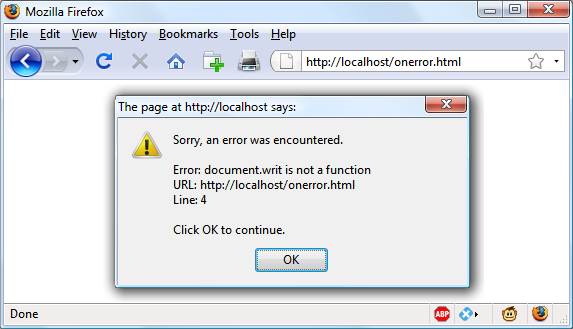Using onerror
Let’s look at a few more constructs not available in PHP. Using
either the onerror event or a
combination of the try and catch keywords, you can catch JavaScript errors
and deal with them yourself.
Events are actions that can be detected by
JavaScript. Every element on a web page has certain events that can
trigger JavaScript functions. For example, the onclick event of a button element can be set to
call a function and make it run whenever a user clicks on the
button.
Example 14-11 illustrates
how to use the onerror event.
<script>
onerror = errorHandler
document.writ("Welcome to this website") // Deliberate error
function errorHandler(message, url, line)
{
out = "Sorry, an error was encountered.\n\n";
out += "Error: " + message + "\n";
out += "URL: " + url + "\n";
out += "Line: " + line + "\n\n";
out += "Click OK to continue.\n\n";
alert(out);
return true;
}
</script>The first line of this script tells the error event to use the new
errorHandler function in the future.
This function takes three parameters—a message, a url, and a line number—and it’s a simple matter to display
all these in an alert pop-up.
Then, to test the new function, a syntax error is deliberately
placed in the code with a call to document.writ instead of document.write (the final e is missing). Figure 14-1 shows the result of
running this script in a browser. Using onerror this way can also be quite useful during
the debugging process.
